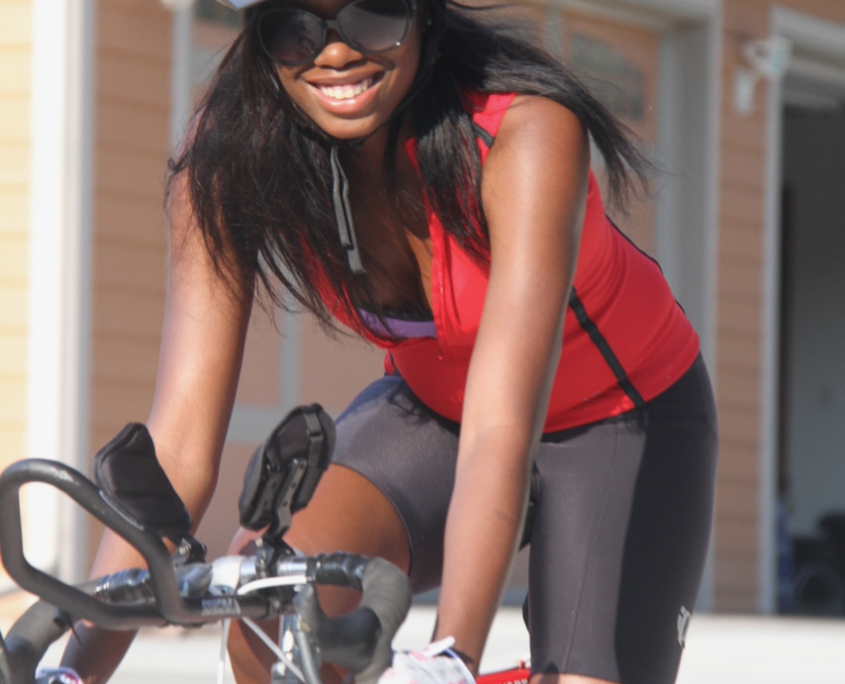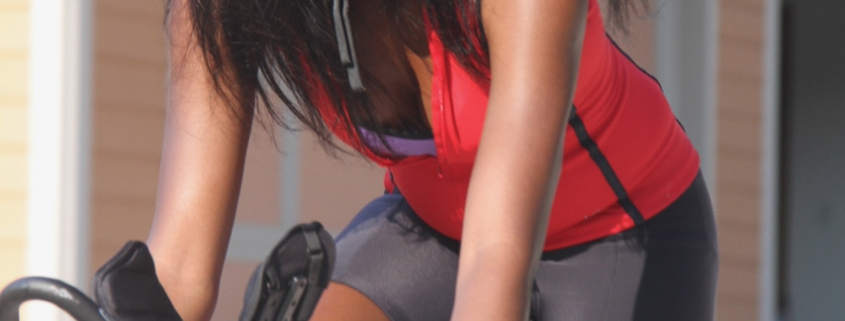Protect Your Brain and Body from Spring Cycling Hazards
Spring cycling hazards greatly increase the risk of brain and other injuries with roads conditions worse and motorists less aware.
By Rebecca Martin
It is that time of year when warmer days herald the emergence of cycling enthusiasts. I would venture to guess that this year will be a stellar year for the number of cyclists on roadways as we emerge from the year of Covid and begin to experience the increased need to be out and about. I happen to live on a route popular for local cyclists with numerous signs encouraging courtesy to cyclists. Ironically this busy two lane highway lacks shoulders and seems somewhat counter-intuitive as a desirable biking route. Perhaps the signs should say: motorists beware, high risk traffic ahead. Cyclists are not the only two wheelers common on highways this time of year as motorcycles also make an appearance and there are some common dangers which make this time of year hazardous to both self-propelled and motorized enthusiasts.

Spring cycling hazards abound because of the deterioration in road conditions and motorists forgetting that bikes can be on the road. Always wear a helmet. It can save your life.
As warmer temperatures appear, motorists are less likely to be on the lookout for those first few brave cyclists as they might be later on during the summer. Roads have degraded over the winter; debris is more likely to litter roadways and the wildlife is beginning to emerge creating distractions for drivers intent on avoiding everything and perhaps missing the most obvious; cyclists on the roadway. The same hazards threaten cyclists out for the first time this spring. Light conditions have begun to shift and visibility may be affected by brighter lower level sunlight. And drivers are more likely to skip turning on headlights in low light situations. And perhaps we are driving a bit faster on a sparkling spring day.
Potholes and Road Conditions Create Spring Cycling Hazards
Adding to Spring cycling hazards is the common appearance of potholes in the roadway. Potholes are more common in winter and spring due to the freeze/thaw cycle. But as weather brings out the cyclists, potholes become a greater issue for cyclists in springtime. Potholes can appear out of nowhere and there is no guarantee a roadway that was clear one day will be clear the next. Roadbikerider.com recommends treating potholes like glass as not only the potholes themselves are dangerous, so are the scattered shards of pavement around them. They also recommend planning your riding routes well in advance, noting potential problems.
As wet leaves on the roadway are a potential hazard in fall, newly mowed grass has is a spring cycling hazard for cyclists and motorcyclists alike. Many cities and states have ordinances prohibiting mowing in such a way as to send grass clippings into the roadway where they become as slippery as a sheet of ice. Grass is made up mostly of water and on the roadway acts very much like water and can cause a sudden loss of traction. Leaving grass clippings in the roadway or blowing them into the roadway is negligent and dangerous and has cost the lives of many motorcyclists and may be subject to a lawsuit depending on where you live.
If a homeowner uses a yard service to maintain their roadside property, it is up to the homeowner to make sure the service is aware that this is not acceptable. The solution is to blow grass clippings away from the roadway and to mow the last rows away from the roadway. Despite these warnings and ordinances, every year I come across entire sections of highway covered with grass clippings and have even spotted homeowners blowing the grass off their properties without conscience. These instances need to be reported to local municipalities when there are ordinances in place.
Spring cycling hazards also may include roadside ditches that are overgrown, limiting visibility of encroaching wildlife. Some states delay roadside mowing due to wildlife concerns and this can also create a hazard for riders who cannot see a deer approaching the roadway until it’s too late.
Prepare for First Spring Ride
Riders Plus Insurance has an excellent checklist for motorcyclists for spring riding at https://ridersplus.com/11-spring-motorcycle-hazards-to-prepare-for/ including links to preparing to get your bike out after a winter hiatus.
Cyclists as well, need to do some preparation for those first rides of spring. These include having the right gear for proper visibility. Bikes should be equipped with reflectors, front and rear. Clothing should have reflective strips. Although we are beginning to see longer daylight hours, an evening ride may have decreased visibility compared to summer.
Follow the Rules of Road to Avoid Spring Cycling Hazards
A good understanding of road rules is necessary as cyclists need to follow the same rules as motorists.
It is also highly recommended that cyclists carry identification with emergency contacts when riding in case of an accident. This can be done by carrying a wallet or using an identification bracelet with name and contact information.
And springtime tune ups are important for cyclists and motorcyclists after the long winter. And it is a good time for a personal tune up as well as you may not be in the best shape after a long winter which could impact your own reaction and handling times. The first excursions into the outdoors after winter are not the best place to find out those extra winter pounds are having more impact than we might have imagined.
Over the years, I have lost good friends in cycling accidents and listened to accounts of my friends’ harrowing accidents while cycling. These seem to be equally distributed between solo riders and those who ride in a group. Obviously a solo rider is harder for a motorist to spot but riders in a group can be impacted by one misstep by one rider. It is important when riding in a group that all are on the same safety and preparation page in order to insure everyone’s safety.
Last year, due to Covid, traffic was reduced by as much as 41% for months at a time.
“The magazine Outside tracked every death of a bicyclist in a collision with a car so far in 2020 and found that despite COVID-19 dropping traffic rates and road miles traveled in the U.S., death rates for cyclists remain high.” https://jalopnik.com/cars-have-killed-almost-700-bicyclists-in-2020-1845934793
One of the factors mentioned in this article is that when we consider vehicle crash safety we are not factoring in pedestrian, and other non-vehicular safety. So as deaths continue to be high for cyclists and motorcyclists every year, we have done little to decrease the size and potential deadliness of motor vehicles. In fact, every year shows an increase of larger vehicles on the roads with an increased capacity to injure or kill non-vehicular traffic. In 1994, large vehicles were about 40% of the total traffic and today it has risen to around 72%. As a result we are seeing an increase in deaths and injuries.
Of course another vital development is increased distraction inside vehicles including cell phone usage. This is something that is being addressed across the nation legislatively, but I am sure everyone reading this article has spotted someone on a cell phone while driving in the past month. When we add in fast food, other vehicle amenities and life in general, these larger vehicles on the road can be a very serious hazard to those sharing the road.
Wear Helmets to Reduce Spring Cycling Hazards
This brings us to the topic of helmet safety, both for cyclists and motorcyclists. The helmet can make the difference between a severe brain injury and a little road rash. For information of carbon monoxide and brain damage, click here.
Every year in the United States, 800 bicyclists are killed and another 500,000 are admitted to emergency rooms. It has been shown that wearing a helmet can reduce the risk of brain injury by as much as 85% according to the Cleveland Clinic. According to the Cleveland Clinic, all helmets manufactured after March. 1999, are required by law to meet the Consumer Product Safety Committee (CPSC) standard. Helmets with ASTM, ANSI and Snell labels also meet this standard as these were manufactured under voluntary safety standards prior to 1999.
Bicycle helmets should be fitted properly. Helmets for roadway biking are usually more aerodynamic, lighter and offer more ventilation than those used for off road. Helmets should fit snugly but not too tight and should not move side to side. They should fit flat on the head and give protection to the forehead area as they are designed for forward impact unlike mountain bike helmets which add additional protection against backward falls. The proper fit would be with the front lip resting about an inch above the eyebrows. The left and right side straps should form a “Y” and meet right below your ear. There should only be a fingertip width of space between the helmet and your forehead. Sometimes padding may be required to give the best fit but one layer only. More than that and you can have slippage. The chin strap should fit snugly so that only a finger or two can be inserted.
It is important that a previously damaged helmet is not used. It is a much better guarantee of safety to have a new, unused helmet. It is suggested that a helmet be replaced every 3-5 years and more often in the case of children’s helmets.
Price does not ensure safety. A higher priced helmet may be lighter and offer more ventilation but doesn’t necessarily add additional safety.
Motorcycle helmets reduce the risk of death by 37% and the risk of brain injury by 69%. Helmets also reduce the risk of fatality to motorcycle passengers by 41%.
“according to the National Highway Traffic Safety Administration (NHTSA). In 2018, motorcyclists were 27 times more likely than passenger car occupants to die in a crash per vehicle miles traveled”
Conscientious motorcyclists have a mantra: ATGATT which means All the gear, all the time. And this is the smart way to approach safety when riding.
There are many types of helmets available for roadway use and much depends on the profile of the bike one is planning on riding. There are full face helmets, modular helmets, open face helmets and half helmets. There are even helmets that are dual function for off road and on road use.
Whichever type you choose, your helmet should meet motorcycle helmet safety standards. Some states require that helmets meet a Department of Transportation requirement. Know your state laws.
Helmet Fit is Critical
As with bicycle helmets, finding the right fit is important and the helmet should fit snugly with little side to side or forward to backward movement. As some types come without visors they should be fitted with the protective eyewear you have opted to wear in mind.
We highly encourage that proper preparation be taken rather than impulsively going out for that first ride of spring. Preparing equipment, preparing yourself, taking safety precautions and becoming familiar with your route; all go a long way towards guaranteeing a safe outing. Keep in mind the unique hazards that can be encountered in spring and watch for motorists who may be unaccustomed to cyclists after the winter months. Safe biking to all!




Leave a Reply
Want to join the discussion?Feel free to contribute!